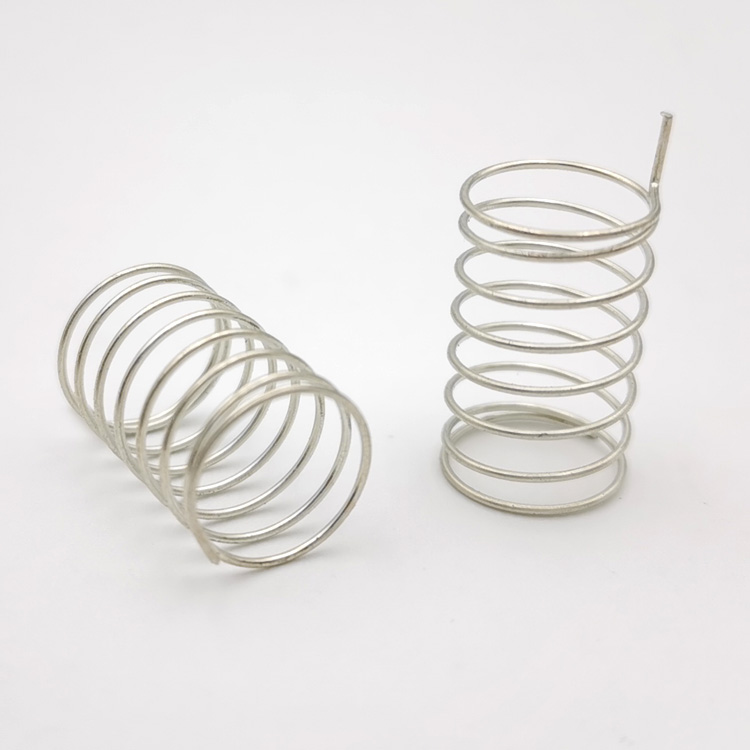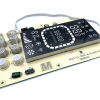
Popular Torsion Spring Topics | door torsion spring
/product/torsion-spring-c-119.html
Included below are a number of popular topics that interest homeowners when considering torsion spring purchases. Though it may be helpful to consider these options, they do not apply to all garage doors.
Replace Both Torsion Springs?
If you have two torsion springs on your door, you should replace both of them. Most doors have springs with the same cycle life rating. In other words, when one spring breaks, the other spring will probably break before too much longer. Since you will be going to the trouble of changing one torsion spring, it is usually better to change your second spring as well. This will save you time in the garage as well as money on the shipping costs.
Some doors, however, have two springs with different dimensions. Many times, the cycle life of the broken spring is shorter than the cycle life of the unbroken spring. This means that you may still have another couple thousand cycles left on your unbroken spring. If you only change one spring now, you will probably need to change your other spring fairly soon down the road. Therefore, we recommend that you still replace both springs, but that you purchase springs with the same length, inside diameter and wire size.
If this is the case, each of your new torsion springs will need to lift 1/2 of the total lift of your two old springs. A matched pair of springs can be determined for you by using our Unmatched Springs calculator.
For help determining whether you should replace both springs on your door, see our Torsion Spring FAQ's page. You can also read more about springs with different dimensions.
One Spring or Two?
A lot of people have a garage door with only spring on it and wonder whether they should upgrade to two springs. If the new torsion spring that you will install on your door has an inside diameter (ID) of 1-3/4" and a wire size of .250 or larger, we suggest that you convert to two torsion springs. The same holds true with a 2" ID and .2625 wire size or a 2-1/4" ID and .283 wire size.
The problem with having a larger wire size on a single-spring door is that the spring pulls on the shaft as the door opens and closes. This can cause serious problems in the future including cables breaking or peeling off the drums and steel sections getting damaged. While it usually costs $5-$10 to convert over to two springs, it can save a lot of money down the road.
One question that people frequently ask when converting to two springs is whether they need a second bearing for the second spring. The answer is no. The purpose of the bearing is to keep the stationary cone centered on the shaft so that the spring is centered on the shaft. Since the stationary cones from the two springs will be secured to each other in the process of securing the springs to the spring anchor bracket, the second spring does not need a bearing. Additionally, adding a second bearing will probably break one or both of the stationary cones.
For more information to help you decide whether to have one spring on your garage door or two, see our One Torsion Spring or Two? page.
Different Spring Dimensions?
If your two spring dimensions are not the same, we recommend switching to a pair of springs with the same dimensions. While it is possible to use unmatched springs, you are more likely to get the maximum cycle life out of a pair of springs when they are the same length, wire size and inside diameter.
door torsion spring
Included below are a number of popular topics that interest homeowners when considering torsion spring purchases. Though it may be helpful to consider these options, they do not apply to all garage doors.
Replace Both Torsion Springs?
If you have two torsion springs on your door, you should replace both of them. Most doors have springs with the same cycle life rating. In other words, when one spring breaks, the other spring will probably break before too much longer. Since you will be going to the trouble of changing one torsion spring, it is usually better to change your second spring as well. This will save you time in the garage as well as money on the shipping costs.
Some doors, however, have two springs with different dimensions. Many times, the cycle life of the broken spring is shorter than the cycle life of the unbroken spring. This means that you may still have another couple thousand cycles left on your unbroken spring. If you only change one spring now, you will probably need to change your other spring fairly soon down the road. Therefore, we recommend that you still replace both springs, but that you purchase springs with the same length, inside diameter and wire size.
If this is the case, each of your new torsion springs will need to lift 1/2 of the total lift of your two old springs. A matched pair of springs can be determined for you by using our Unmatched Springs calculator.
For help determining whether you should replace both springs on your door, see our Torsion Spring FAQ's page. You can also read more about springs with different dimensions.
One Spring or Two?
A lot of people have a garage door with only spring on it and wonder whether they should upgrade to two springs. If the new torsion spring that you will install on your door has an inside diameter (ID) of 1-3/4" and a wire size of .250 or larger, we suggest that you convert to two torsion springs. The same holds true with a 2" ID and .2625 wire size or a 2-1/4" ID and .283 wire size.
The problem with having a larger wire size on a single-spring door is that the spring pulls on the shaft as the door opens and closes. This can cause serious problems in the future including cables breaking or peeling off the drums and steel sections getting damaged. While it usually costs $5-$10 to convert over to two springs, it can save a lot of money down the road.
One question that people frequently ask when converting to two springs is whether they need a second bearing for the second spring. The answer is no. The purpose of the bearing is to keep the stationary cone centered on the shaft so that the spring is centered on the shaft. Since the stationary cones from the two springs will be secured to each other in the process of securing the springs to the spring anchor bracket, the second spring does not need a bearing. Additionally, adding a second bearing will probably break one or both of the stationary cones.
For more information to help you decide whether to have one spring on your garage door or two, see our One Torsion Spring or Two? page.
Different Spring Dimensions?
If your two spring dimensions are not the same, we recommend switching to a pair of springs with the same dimensions. While it is possible to use unmatched springs, you are more likely to get the maximum cycle life out of a pair of springs when they are the same length, wire size and inside diameter.
door torsion spring






